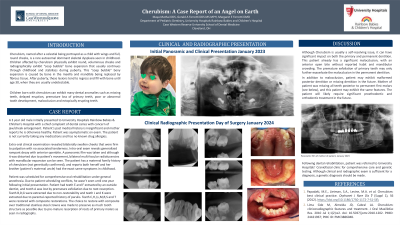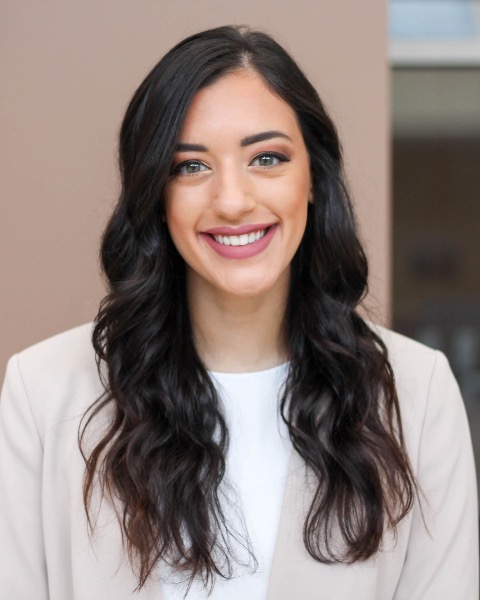Syndromes/Craniofacial Anomalies
502 - Cherubism: A Case Report of an Angel on Earth


Maya Mathai, DDS
Resident
Case Western Reserve University — UH Rainbow Babies and Children’s Hospital, Cleveland, OH
Case Western Reserve University/University Hospitals Rainbow Babies and Children's Hospital
Cleveland, Ohio, United States- MF
Margaret Elaine Ferretti, DMD
Program Director
Case Western Reserve University
Rainbow Babies and Children's Hospitals, Case Western Reserve University
cleveland, Ohio, United States
Presenting Author(s)
Program Director(s)
Cherubism: A Case Report of an Angel on Earth
Maya Mathai, DDS
Cherubism is a rare autosominal dominant disorder affecting bone formation in the upper and lower jaw in childhood. Children affected by cherubism physically exhibit round, voluminous cheeks and radiographically exhibit “soap bubble” bone expansion that usually continues through childhood and stabilizes during puberty. Children born with cherubism can exhibit many dental anomalies such as missing teeth, delayed eruption, poor or abnormal tooth development, and ectopically erupting teeth.
This case report discusses a 4 year old male who initially presented to University Hospitals Rainbow Babies & Children’s Hospital with a chief complaint of dental caries with concern of jaw/cheek enlargement. Patient’s past medical history is insignificant and mother reports he is otherwise healthy. Patient was asymptomatic on exam. The patient is not currently taking any medications and has no known drug allergies. The patient has a maternal family history of cherubism. Extra-oral clinical examination revealed bilaterally swollen cheeks. Intra-oral exam reveals generalized rampant decay. A panoramic film was taken and although it was distorted due to patient’s movement, bilateral multilocular radiolucencies with some mandibular expansion can be seen. Due to mother’s report of herself having cherubism, a panoramic film of mother was also taken. This report will include clinical and radiographic findings associated with cherubism, how the jaw manifestions of cherubism has affected the patients occlusion, treatment rendered to patient to combat decay, and discuss future dental implications and treatment needs.
Identify Supporting Agency and Grant Number:

.jpg)